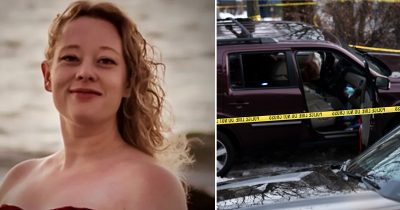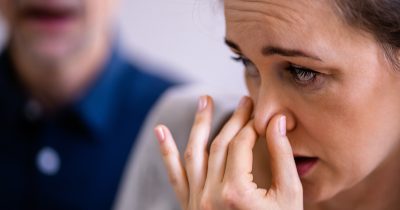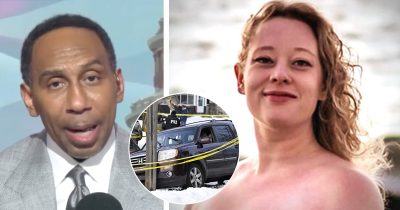
Back in 1967, television was forever changed when Charlie’s Angels burst onto the scene.
The show didn’t just entertain but rewrote the rulebook on what female heroes could be.
Farrah Fawcett, Kate Jackson, and Jaclyn Smith weren’t just solving crimes; they were breaking barriers, proving that women could be smart, strong, and effortlessly stylish all at once.
Charlie’s Angels went far beyond the thrilling mysteries and daring escapades. Farrah, Kate and Jaclyn became icons of empowerment, inspiring a whole generation to rethink women’s roles, both on and off the screen.
And let’s not forget the fashion — those chic outfits weren’t just costumes, they were a statement, influencing trends and pop culture in ways no one expected.
Despite mixed reviews from critics and a reputation for being little more than “jiggle television” that highlighted the sex appeal of its female leads, Charlie’s Angels still soared into the Nielsen top ten during its first two seasons.
I’ve mostly caught reruns of this legendary show over the years, but recently, I decided to dig a little deeper and uncover what really went on behind the scenes of this cult classic. And let me tell you — it turns out there’s a whole bunch of hilarious bloopers, unexpected moments, and surprising stories that you probably never knew about.
A drinking problem and a pajamas
For anyone who somehow missed out on this cult classic, here’s the quick rundown: Charlie’s Angels follows the crime-fighting adventures of three women working at a private detective agency in sunny Los Angeles. The original trio — Kate Jackson, Farrah Fawcett, and Jaclyn Smith — led the show, while the voice of their mysterious boss, Charlie Townsend, came through a speakerphone, guiding their missions.
Now, here’s a fun behind-the-scenes tidbit about Charlie himself. John Forsythe wasn’t the first pick to voice the boss. The original actor, Gig Young, was dropped last minute because of a drinking problem. Forsythe stepped in and ended up recording his first voice-over in his pajamas.

Throughout the entire series, Forsythe never actually showed up on set. All his lines were recorded separately and dubbed in later. He even told the show’s producer, Aaron Spelling, that if he were to appear on screen, it would cost a fortune. To keep up the illusion, whenever Charlie was ‘seen,’ it was actually just a stand-in shot from behind or from a distance.
Same cars, wrong angels
Here’s a blooper you might’ve missed, even if you’ve seen Charlie’s Angels a dozen times. Every time a new scene starts at the Townsend Agency, they show the same shot of the building with the Angels’ cars parked out front. But—if you’re paying attention — the cars out front rarely match which Angels are actually inside in the next scene.
And here’s the kicker: whenever all three cars are shown, they’re almost always parked in the same left-to-right order — white, yellow, and orange. Consistency, right? Well… not quite. The white and orange cars are always parked in red zones (aka no-parking areas), and there’s only one parking meter for all three spots. So either the Angels had some serious VIP pull, or the parking department just looked the other way for crime-fighting fashionistas.
Oh, and in case you were wondering about those stylish rides? Each Angel had her own signature Ford. Jill (and later Kris) cruised around in a flashy Cobra, Kelly kept it cool in a Mustang, and Sabrina rocked a Pinto like the boss she was. And let’s not forget Bosley — he rolled up in a Thunderbird, naturally.
How much did they earn per episode?
When Charlie’s Angels first hit the airwaves, Farrah Fawcett and Jaclyn Smith were new to the acting scene — and their paychecks showed it. Both were making just $5,000 per episode. Meanwhile, Kate Jackson, the seasoned pro of the trio, was pulling in double that at $10,000.
But things changed — especially for Jaclyn Smith.

As the only Angel to stick with the show through all five seasons, Smith’s paycheck grew right alongside the show’s popularity. By the time the final season aired, she was earning a jaw-dropping $75,000 an episode, putting her among the highest-paid TV stars of the time.
Only four big names made more than her: Carroll O’Connor (All in the Family), Alan Alda (MASH*), Larry Hagman, and Linda Gray (both of Dallas fame).
From Alley Cats to Charlie’s Angels
Believe it or not, the legendary show Charlie’s Angels almost had a very different and very awkward name: Alley Cats. Yep, that was the original title being tossed around, even though it had zero to do with the stylish, crime-fighting women at the heart of the series. And let’s be real… the name didn’t exactly scream “classy detectives.”
Thankfully, Kate Jackson stepped in. While sitting in Aaron Spelling’s office, she noticed a painting of three angels on the wall. That’s when inspiration hit — and she suggested the name Charlie’s Angels instead.
The rest? Total TV history.
Thanks to that moment, the show became a pop culture staple, building a legacy that’s still alive today through reruns, DVD box sets, reboots, and a full-blown film franchise that kicked off in 2000.
Why Farrah Fawcett really walked away
When Charlie’s Angels first hit the airwaves in 1976, Farrah Fawcett wasn’t just one of the stars — she was the phenomenon. Her famous red swimsuit poster was everywhere, and her feathered blonde hair became the hairstyle of the decade. Fans were obsessed. The media couldn’t get enough. But then, just one season in, she shocked the world: Farrah was done.
So why did Farrah Fawcett leave one of the biggest shows on television? The answer, it turns out, is layered — with money, marriage, ambition, and a deep yearning for more than just fame.
When you look at photos from the set with all the Angels together, they often appear happy and cheerful — but behind the scenes, things were definitely more complicated.
Farrah’s sudden celebrity skyrocketed her past co-stars Kate Jackson and Jaclyn Smith. According to the Washington Post, she was in line for a raise to $10,000 per episode, but rumors swirled she wanted $75,000. On top of that, she reportedly asked for 10% of the show’s merchandising profits. But the producers weren’t getting any real signals from her.
“I would say, ‘Well, Farrah, if we give you eight percent?’ and she would say, ‘Well, no, I don’t know,’” producer Leonard Goldberg recalled to Vanity Fair. It seemed like she didn’t want to negotiate at all.
The real struggle Farrah faced
In truth, Farrah had her sights set on something more than a TV paycheck. In early 1977, she told the Washington Post she dreamed of making a “picture with real woman’s emotions.” Her co-star Jaclyn Smith later confirmed that Farrah “wanted to do features instead of a series.”
Farrah and her then-husband, Lee Majors, even created their own production company called Fawcett-Majors Productions. The show’s producers tried to make her stay by offering a deal: keep doing Angels, and they’d also cast her in a feature film. She passed.
Farrah felt creatively stuck. While the show was known for its glamor and action, she wanted to show more depth — more pain, more heart.
“I want them to start showing she’s had some hard knocks, too, and cries, and is sad,” she told The Washington Post. “Who’s gonna care about her if all she does is say, ‘Ooo! This week I get to play the hooker?’”

She even admitted that the show’s popularity probably had little to do with acting. “When the show got to be No. 3, I figured it was our acting. When it got to be No. 1, I decided it could only be because none of us wears a bra.”
In the end, she was brutally honest: “Creatively, I just felt stifled. So, it was time for me to leave.”
“I felt uncomfortable when all of a sudden I got more attention and fan mail than Jaclyn Smith or Kate Jackson,” she told People in 1981. “I felt them change, not outwardly, but inwardly. We never had any arguments, but I felt a little barrier.”
Everywhere she went, fans swarmed. Her fame became suffocating. “I became successful before I was ready for it or knew what I was doing,” she admitted. “The success came before I had done what I thought was a good role.”
She knew one thing: “If I was going to stay in the business I had to change — and I wanted to change.”
Behind the lawsuit
Farrah’s exit didn’t go over smoothly. Jaclyn Smith publicly criticized her for walking away, saying, “I didn’t think it was the right thing to do. I mean, you have a contract.” But Farrah didn’t back down, insisting: “It’s a well-generated myth that I was violating a contract.”
Still, lawsuits followed. The producers sued her for breach of contract, setting off a tense legal battle.
The legal battle eventually came to an end when Farrah Fawcett agreed to return for six guest appearances throughout the rest of Charlie’s Angels, which continued airing until 1981. But walking away from the show came at a heavy cost to her career. According to Fawcett, her decision to leave led to being shut out of other opportunities in Hollywood.
”The whole lawsuit almost sank me,” she admitted in a 1979 interview with People.
”The industry was furious with me and hostile because I was a TV sex symbol who wanted to be an actress. People thought I was really pretentious, and for months no one would touch me.”
Cheryl Ladd’s bold welcome
After Farrah Fawcett’s departure following the first season, Cheryl Ladd stepped in, bringing her own energy and charm. She joined as Kris Munroe, the sister of Farrah’s character.
On Cheryl Ladd’s very first day on set, she broke the ice by wearing a custom T-shirt that read “Farrah Fawcett Minor” — a cheeky nod to the big shoes she had to fill.

Similarly, when Kirstie Alley joined the cast of Cheers, she made a memorable entrance by dressing in a bold pink power suit, sporting a big blonde wig just like Shelley Long, and playfully acting all prim and proper. Her fun approach instantly won over the cast and crew, making her a hit from day one.
The legacy
The show’s early seasons were a hit, ranking among the top 10 most-watched programs. But as the 1980s rolled in, Charlie’s Angels started to lean more on glamour and less on substance, and viewers began to drift away. The final episode, “Let Our Angel Live,” closed the chapter on what had been a groundbreaking journey.
Yet, the legacy refused to fade. The story was revived with a splash on the big screen, featuring Cameron Diaz, Drew Barrymore, and Lucy Liu — modern Angels who carried the torch forward with fiercer action and a fresh cultural vibe.

The 2011 reboot tried to capture the magic again but faltered, ending after just seven episodes. Then in 2019, Kristen Stewart, Ella Balinska, and Naomi Scott took on the roles, but the series struggled to win over old and new fans alike.
Despite the ups and downs, Charlie’s Angels remains a powerful symbol of female strength and independence.
It challenged stereotypes, opened doors for women in action roles, and showed the world that femininity and toughness are not mutually exclusive. For countless viewers, the Angels weren’t just characters on TV — they were trailblazers, role models, and proof that women could shine brightly in a world that was just beginning to recognize their power.
The original Charlie’s Angels Stars
The original Charlie’s Angels lineup from the 1970s captured hearts around the world and left a lasting legacy in TV history.
Here’s a quick look at the fates of the iconic Angels:
Kate Jackson (born October 29, 1948) — Still alive and well, Kate continues to be remembered for her role as Sabrina Duncan, the smart and tough leader of the Angels.
Farrah Fawcett (February 2, 1947 – June 25, 2009) — Sadly, Farrah passed away at age 62 after a long battle with anal cancer. She remains one of the most beloved Angels, remembered for her iconic hairstyle and charm.
Jaclyn Smith (born October 26, 1945) — Jaclyn, the only Angel to appear in all 110 episodes, is still alive and thriving. She paved the way for female leads in television with her role as Kelly Garrett.
Cheryl Ladd (born July 12, 1951) — The actress who replaced Farrah Fawcett as Kris Munroe is also alive and well, still active in acting and music.
Shelley Hack (born July 6, 1947) — Shelley joined in season 4 and is living a full life as an actress and producer.
Tanya Roberts (October 15, 1949 – January 4, 2021) — Tanya passed away at age 71 due to complications from a urinary tract infection, sadly just after being misreported as dead.
If you grew up loving Charlie’s Angels or just want to honor their legacy, share this tribute and keep their spirit alive!




